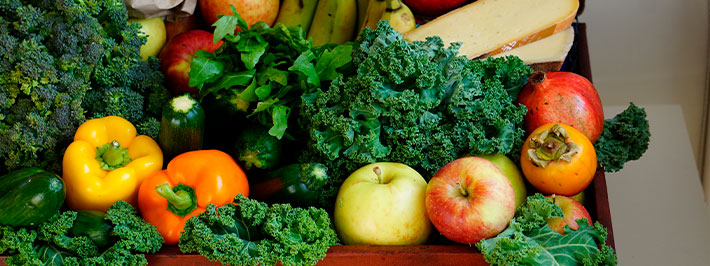
How to store fruits and vegetables for longer?
What foods go into the refrigerator and which ones are kept at room temperature? How to extend the shelf life of strawberries, lettuce leaves, an avocado cut in half, a lemon or onions? Discover small, easy-to-apply tips that will save you time and prevent food waste.
Rich in vitamins, antioxidants, fibers. Fruits and vegetables are foods with incredible nutritional qualities. However, once purchased, you have to know how to store them correctly so that they do not lose their flavor and nutritional qualities. And it's not always easy to get your bearings. With a few simple tips and techniques, save time and money, avoid unnecessary waste, and extend the shelf life of your food. No more guilt every time you throw away a moldy fruit or vegetable.
What fruits and vegetables not to keep in the fridge?
When we buy fruits and vegetables, we all have a habit of storing them in the refrigerator. But before we ask ourselves how to store them correctly, let's first ask ourselves if it is a good reflection. The answer is no, not for all fruits and vegetables. While some of them need to be kept cool, others need to be kept at room temperature, around twenty degrees. Find out which fruits and vegetables should not be kept in the refrigerator.
Bananas: the temperature of the refrigerator prevents ripening and they darken quickly when left;
Tomatoes: it is the same, they will not ripen well and may lose their flavor and food quality.
Garlic: you should keep it in a dry, cool and dark place, but not in the refrigerator;
The onion: should be kept in a dry and cool place, at room temperature, unless the onions are already cut, they can be kept in the refrigerator in an airtight package;
Potatoes and Sweet Potatoes: This starchy vegetable should be like garlic and "onion", stored in a cool, dry place, away from light.
Mushrooms and aromatic herbs; Placed in the fridge, all these fruits and vegetables will see the oxidation phenomenon accelerate or, conversely, the ripening process will slow down, which can cause them to soften or lose their flavor.
How to properly store fresh fruits and vegetables in summer or when they are ripe?
It is possible to keep these fruits and vegetables in the refrigerator, but under certain conditions: when it is very hot, when the heat wave is strong or when the fruits and vegetables have already ripened at room temperature outside the refrigerator and you want to keep them. a little more to keep them from rotting.
Storage of fruits and vegetables: how to keep them in the fridge?
In the case of fruits and vegetables (both those that go in the fridge immediately, and those that go there after a few days of ripening at room temperature), do not keep them in the fridge for more than a few days, a maximum of a week, and Consider placing them in the crisper drawer.
Grapes, celery, eggplant, broccoli, cauliflower, cucumber, leek, fresh berries and fresh vegetables that go in the fridge are best preserved when they are in their original packaging;
Store chestnuts, chestnuts, and zucchini in a paper bag in the refrigerator;
Citrus fruits (oranges, grapefruits, lemons) are fruits that have a thick skin that protects them from the air, and therefore allows them to be easily stored outside of the refrigerator, in the open air.
Climacteric fruits
When storing your fruit, you have to be careful with the mixes, whether in the fridge or in the basket! This is because some fruits called climacteric fruits continue to ripen after being harvested. They emit ethylene gas that promotes the ripening process of other fruits next to them. It all depends on your needs: if you want your still green fruits to ripen faster, place them in a basket next to the climacteric fruits, but if they are already very ripe, avoid! We can mention among other bananas, figs, apples, which are especially known for ripening other fruits, but also pears, mangoes, kiwis, melons, guavas.
How to store berries in the refrigerator?
Like all fresh fruits or berries, it is best to first keep red fruits (strawberries, raspberries, blueberries, blackberries, currants, cherries, black currants, etc.) in their original packaging, plastic or not. Plastic bags with small openings help keep fruit fresh for longer by removing moisture.
Before storing them in the fridge, wash strawberries, raspberries, and other berries in a mixture of one-third vinegar and two-thirds water. In this way, it disinfects the fruit and limits the risk of mold. Rinse them with water and dry them well before storing them for several weeks.
Another solution to keep them longer: freeze them! You can freeze the berries whole, in small pieces, or even place them in a jar with syrup.
When I store fruits and vegetables in the refrigerator, what temperature of storage should I choose?
The ideal place to store the fruits and vegetables that go to the refrigerator is the fruit and vegetable drawer at the bottom of the refrigerator. Indeed, it is there where its storage temperature will be optimal: between eight and ten degrees, it will allow a good maturation of the food.